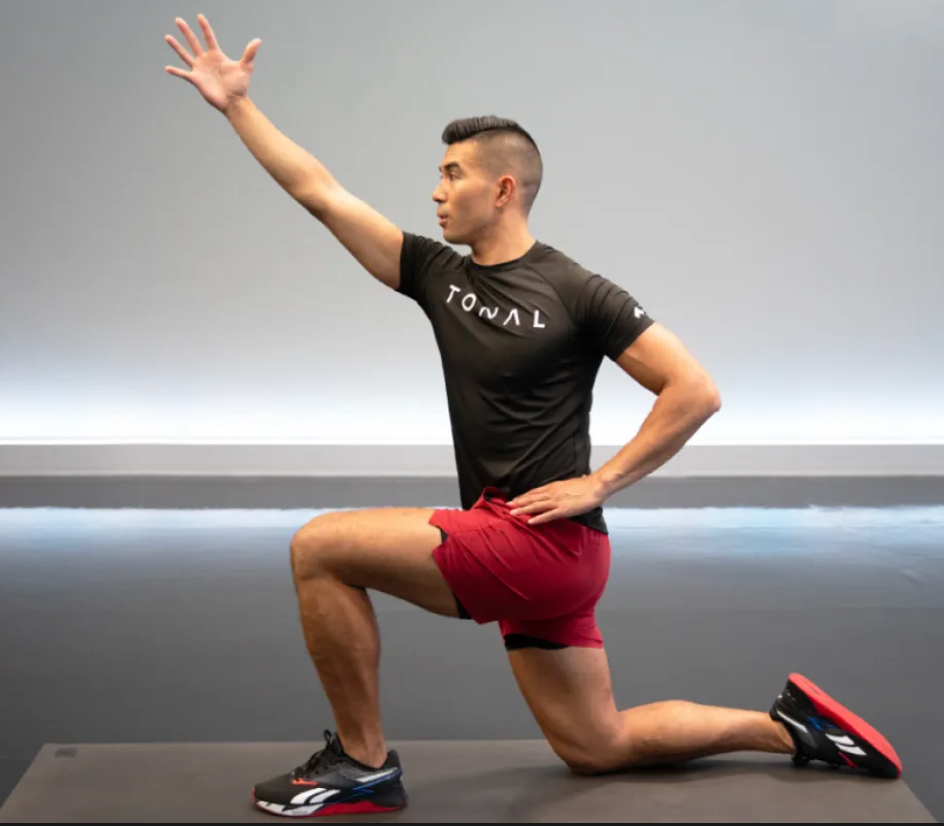Mobility refers to the ability of a joint or a group of joints to move through a full range of motion with control and stability. It encompasses factors such as joint flexibility, muscle strength, coordination, and neuromuscular control. Good mobility enables efficient and pain-free movement patterns, enhances sports performance, and reduces the risk of musculoskeletal problems. Regular mobility exercises can help maintain and improve joint health, movement quality, and overall physical well-being.

What is an example of mobility exercises?
One example of a mobility exercise is the hip flexor stretch. Here’s how to perform a hip flexor stretch:
- Kneel on the floor with one knee bent at a 90-degree angle in front of you and the other knee on the ground.
- Engage your core and gently shift your weight forward until you feel a stretch in the front of your hip and thigh of the leg that is kneeling.
- Hold the stretch for 15-30 seconds, breathing deeply and maintaining a slight tilt of the pelvis to deepen the stretch.
- Slowly release and switch to the other leg to stretch the opposite hip flexor.

Hip flexor stretch is a great exercise for improving hip mobility, reducing tightness in the front of the hips, and promoting better range of motion in the hips and pelvis. It is beneficial for individuals who spend long hours sitting or have tight hip flexors from activities like running or cycling. Stretching the hip flexors regularly can help improve overall mobility and prevent hip-related issues.
Can you heal the joint pain with mobility exercises?
Mobility exercises can help alleviate joint pain by improving joint function, reducing stiffness, and increasing range of motion. While mobility exercises may not directly “heal” joint pain in all cases, they can be beneficial in managing and preventing certain types of joint pain, particularly if the pain is related to poor mobility, muscle imbalances, or movement dysfunction.
Regular mobility exercises can help address underlying issues that contribute to joint pain, such as tight muscles, limited range of motion, and improper movement patterns. By improving joint mobility, strengthening supporting muscles, and enhancing movement control, mobility exercises can reduce stress on the joints and alleviate pain associated with movement restrictions.

It’s important to note that the effectiveness of mobility exercises for joint pain can vary depending on the underlying cause of the pain. For chronic or severe joint pain, it is recommended to consult with a healthcare provider or physical therapist for a comprehensive evaluation and personalized treatment plan. They can provide guidance on the most appropriate exercises and interventions for your specific condition.
Benefits of incorporating mobility exercises into your routine
- Improved Range of Motion: Mobility exercises help increase flexibility and range of motion in your joints, allowing you to move more freely and with greater ease.
- Enhanced Movement Quality: By improving joint mobility and muscle control, mobility exercises can help enhance movement patterns, coordination, and overall physical performance.
- Reduced Risk of Injury: Maintaining good mobility can help prevent muscle imbalances, stiffness, and poor movement patterns that can lead to injuries during physical activities.
- Better Posture and Alignment: Mobility exercises can help correct postural imbalances, release tension in muscles, and improve spinal alignment, leading to better posture and reduced risk of musculoskeletal issues.
- Joint Health: Regular mobility exercises can help maintain joint health, lubrication, and function, reducing the risk of degenerative changes and promoting overall joint longevity.
- Functional Movement: Improved joint mobility supports optimal function in daily activities, such as bending, lifting, and reaching, allowing you to move with greater ease and efficiency.
Incorporating as little as 10-15 minutes of mobility exercises into your daily routine can have significant benefits for your overall physical health and well-being.
How many times should you do mobility exercises per week?
The frequency of mobility exercises can vary depending on individual goals, fitness level, and overall physical activity. In general, it is recommended to practice mobility exercises regularly to maintain and improve joint health, range of motion, and movement quality.
For most individuals, aiming to perform mobility exercises at least 2-3 times per week can be an effective starting point. However, some people may benefit from daily mobility work, especially if they have specific movement restrictions or mobility goals.
Consistency is key when it comes to mobility training. It’s important to listen to your body and adjust the frequency of mobility exercises based on how you feel. Pay attention to areas of stiffness, limited range of motion, or discomfort, and focus on addressing those specific areas with targeted mobility work.
Ultimately, finding a balance that works for you and incorporating mobility exercises into your routine regularly can help promote optimal joint health, movement quality, and overall physical well-being.

Leave a Reply